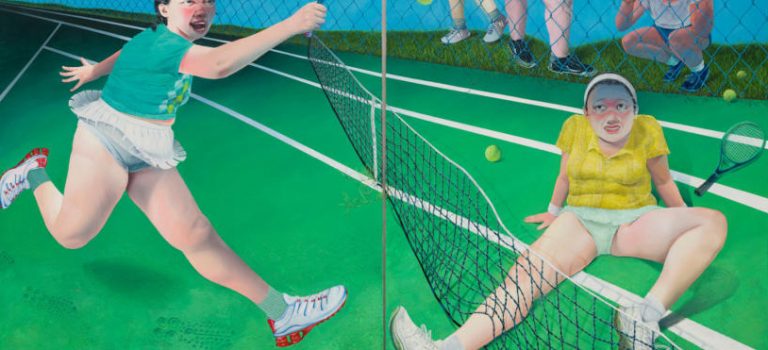Source: Artnet.
Amid a cooling, cautious market, mega-galleries are poaching emerging talent. It’s reshaping the trajectory of artists’ careers.
It used to go like this—or, at least, it was supposed to go like this. A young gallery, with its ear to the ground, spots an emerging artist with talent and works with them for several years. The artist shows in small institutions, gets a prize or perhaps two, makes a catalogue, and slowly builds a devoted collector base. Eventually, they gain slightly larger gallery representation. The possibility of working with a blue-chip gallery is still several years off. After being solidly mid-career for a while, that golden ticket to a legacy career arrives: representation by one of the mega-galleries—Gagosian, Hauser and Wirth, Pace, and White Cube among them.

George Rouy in 2024. He is the youngest artist to be represented by Hauser & Wirth. Photo: Kemka Ajoku, courtesy the artist, Hannah Barry Gallery and Hauser & Wirth, © George Rouy.
Amid a contracting market, aggregate dealer sales fell 6 percent between 2023 and 2024, according to the latest Art Basel and UBS Art Market Report. Yet galleries with an annual turnover of $250,000 or less actually grew sales by 17 percent in the same time period.
“It’s clear that the market has shifted toward a higher volume of sales at lower price points,” said Lisa Offerman of the gallery LC Queisser, which has spaces in Cologne and Tbilisi.
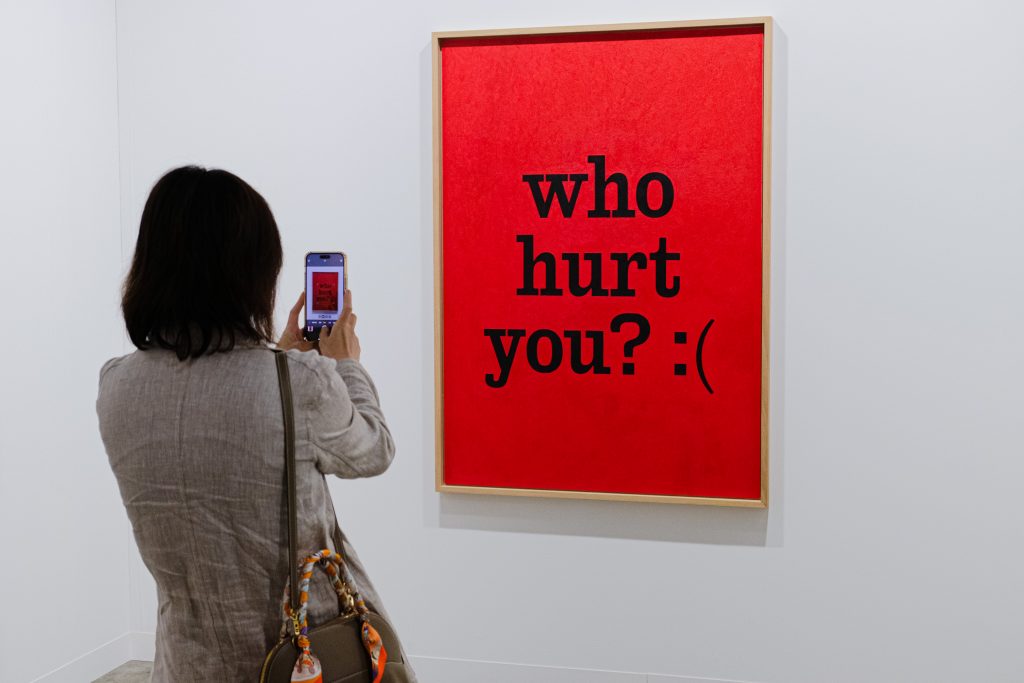
Artwork by Nora Turato during Art Basel Hong Kong 2025. Photo: Keith Tsuji/Getty Images.
The Race to Sign Talent
Tough competition has triggered a chain reaction, transforming how artists are discovered, priced, and represented—and it’s forcing smaller players to rethink their entire role in the ecosystem. This has contributed to a measurable rise in co-representation deals, where a small gallery will share an artist with a larger one, though these arrangements are notoriously uneven and can result in smaller galleries losing leverage. Several dealers and advisors I spoke with said that artists are being scooped up earlier and faster, sometimes before emerging dealers even have time to develop their programs.
“The new policy among heavyweight galleries is ‘first come, first served’ with emerging talent,” said Thomas Stauffer, a Zurich-based advisor at Gerber and Stauffer Fine Arts.
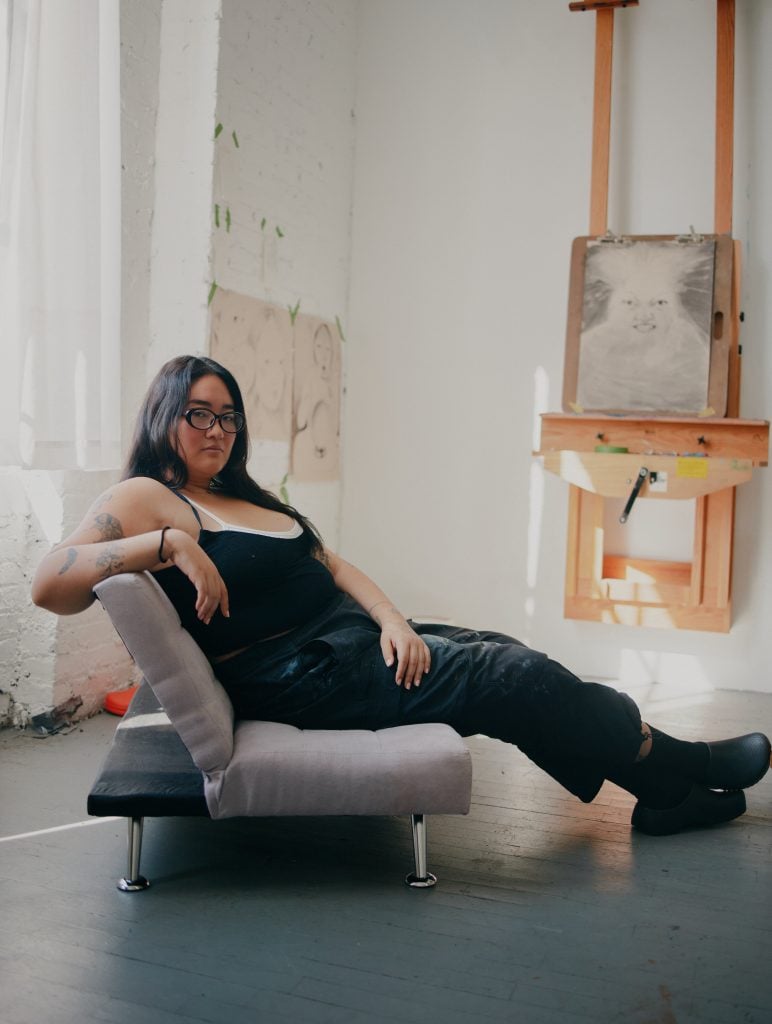
Sasha Gordon in 2023. Photo: William Jess Laird.
By November, a few months after Zwirner announced representation of Gordon, two of her paintings were sold at Christie’s New York November sales for $119,700 and $214,200, respectively. The final prices roughly doubled the pre-sale high estimates in both cases (sale prices include buyer’s fees, estimates do not).
Many people I spoke with questioned what sustainability looks like in these scenarios. “When a gallery signs a 27-year-old with two museum shows, there may be 50 more years of exhibitions to go. That’s a big commitment,” said one dealer. Often, blue-chip galleries will have more than two dozen artists on their roster, many of whom sell works at higher price points. So while the interest in a new young artist entering a big gallery may be strong at the onset, several people I spoke to noted skepticism about how maintainable that attention and focus is. “I am never wondering about that first show,” said Gladstone. “I am wondering about that fourth or fifth show.”
“Emerging” can refer to a variety of factors, age being only one. Typically, it has implied price points around $10,000, but that boundary is creeping upwards to between $30,000 and $45,000. Yet, at that point, artists cross into the mid-tier range of pricing, regardless of how mid-career they may be or not. “The signals are scrambled,” Artnet’s Editor-in-Chief Naomi Rea recently wrote in a report on the crisis in art pricing. “Now, $30,000 gets you a résumé-light emerging artist, $300,000 a mid-career work no one can flip.”
“The pricing discrepancy has become a red flag,” agreed Franklin Melendez, co-founder and partner at the art advisory DM Office. “It’s impossible to justify to a collector why young artist X costs as much as established artist Y whose in every biennial and museum.”
Nevertheless, the emerging bracket remains an appealing price point, especially in this current market. Stauffer, the advisor, has noticed increased buyer hesitation for works over $200,000. But beneath that threshold, things are moving fast.
“The emerging market—modest in price, rich in conviction—is swelling with cautious optimism,” said collector Sylvain Levy. “Collectors are returning to the idea that art is not a hedge, but a companion.”
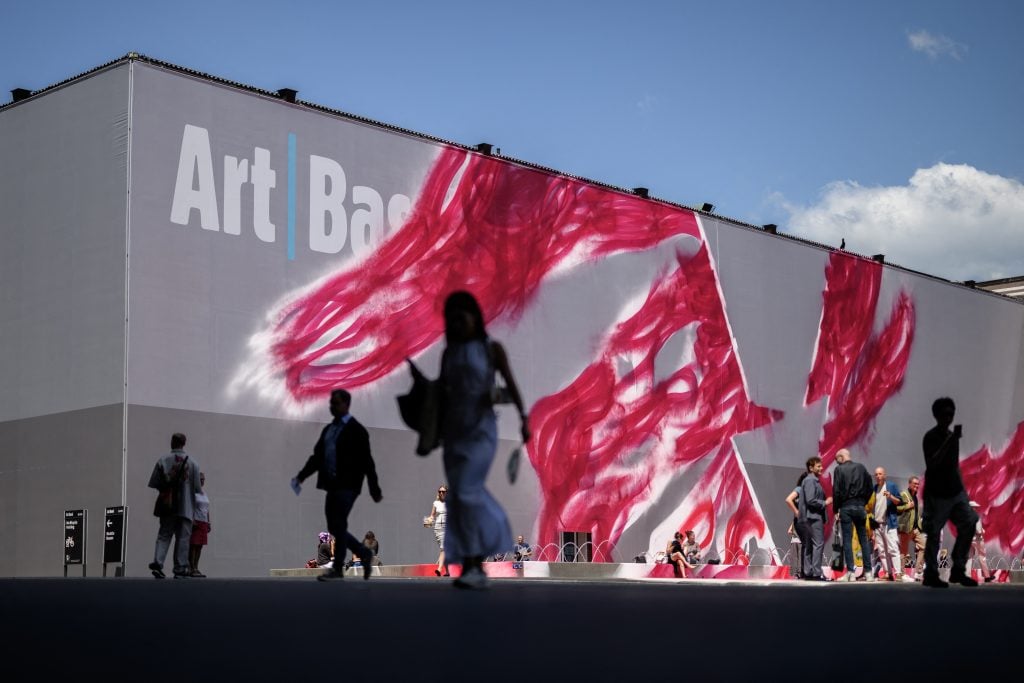
Visitors walk to the entrance of Art Basel, Switzerland, 2025. Photo by Fabrice Coffrini / AFP via Getty Images.
As such, big galleries are diversifying the price points they work with, not only because the speculation bubble has burst, but also to lure new collectors. Art market reporter Tim Schneider recently highlighted the rise of the “barely rich” in his weekly newsletter, the Gray Market. He described these buyers as those with assets under $5 million, a group whose population has quadrupled since 2000. While less liquid than traditional blue‑chip collectors, they now account for a significant proportion of primary market sales and are reshaping the priorities of galleries at every level. New buyers made up 38 to 44 percent of total gallery sales in 2024, according to the Art Basel and UBS report.
This new wave of price-point conservatism is accompanied by a new kind of prioritization for dealers. “Any galleries banking on the richest of the rich to singlehandedly elevate their program to a higher plane of profitability are probably already dead—their owners just haven’t admitted it yet,” Schneider wrote.
But in a tight market, it places pressure on the early stages of artists’ careers and the gallerists that work with them. “The pressure to quickly discover and secure the next ‘hot’ position has become much more intense than it used to be,” Offerman, the dealer, said.
The Hype Machine
The moment a blue-chip gallery picks up an artist, their prices may not increase immediately, but often will as soon as the first show opens at that mega gallery. Gordon’s show at David Zwirner, which opens in New York this fall, will be one to watch on this front.
“It used to be that we would measure artists’ careers in decades,” said art advisor Meldendez. “Now it’s in short five-year spurts—if that.”
The art advisor Karen Boyer had collectors who were following Gordon closely but were cut out when the artist gained mega-gallery representation. “There’s a difference between selling out a first show and building a lasting career,” she said. “High prices can sabotage that.”
She said her collectors lost access to Gordon’s work, even if they had been following it for a while. “When she was picked up by Zwirner, suddenly people who had never heard of her wanted her work. If my clients are not already clients of Zwirner, suddenly they’re not able to buy her work. The next place we looked was at Christie’s,” she said.
Regardless of the price, risk perception changes based on who is selling a work. A young dealer who specializes in emerging artists who was participating at Art Basel told me “$20,000 at Zwirner doesn’t feel the same as $20,000 at a young gallery.” This psychological gap creates a serious problem for smaller outfits. “It might be the exact same painting,” they said. “But collectors feel safer buying it from Zwirner.”
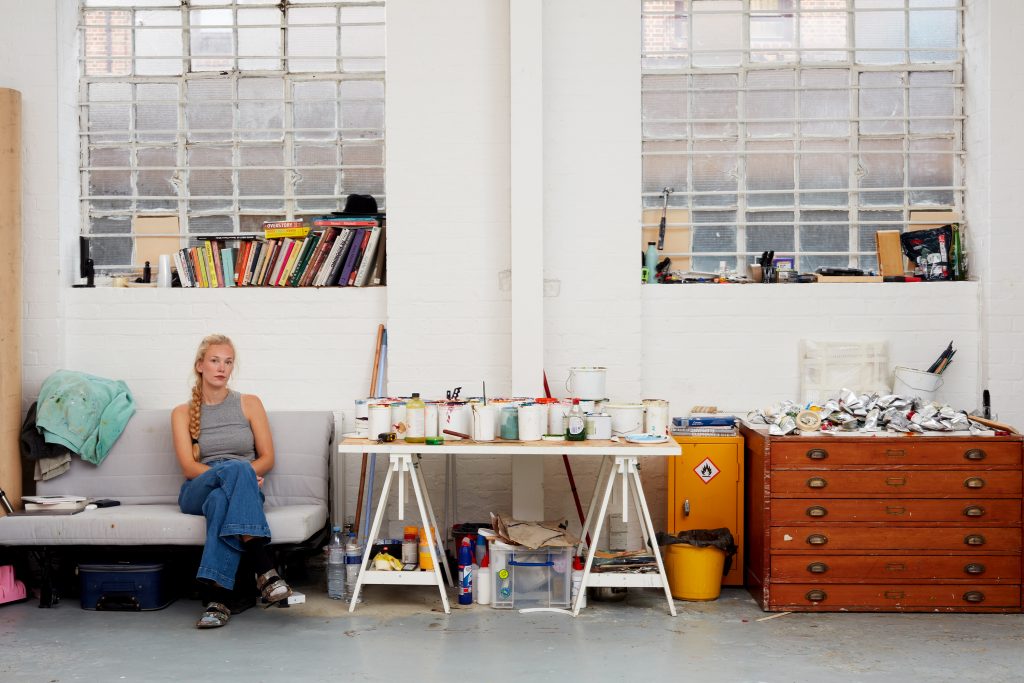
Portrait of Pam Evelyn, 2023. The 29-year-old artist is represented by Pace Gallery. Photo: Robert Glowacki. © Pam Evelyn. Courtesy of Pace Gallery.
Stauffer, the advisor, singled out galleries like Matthew Marks and Modern Art (London) as positive dealer models of intelligent restraint, who are doing things differently. “Young artists need room to grow. The old-school model—cautious pricing and good placement—still works.”
“It can be especially challenging,” said Offerman, “for artists whose initial hype has faded and who are now working to build stable, long-term careers.”
Reach Versus Relationships
Big galleries may offer a wider collector reach. Yet smaller galleries often have more close-knit relationships with small- and medium-sized institutions, where artists can have key solo shows, and assistant curators at major institutions. These relationships are often essential for early-career opportunities and need time to ferment properly. Even if co-representation is becoming more common as large galleries recognize the vital role smaller ones play in nurturing artists’ careers, these partnerships can cause “a lot of confusion now about who’s doing what and why,” said Fitzpatrick. “So, you have to be even more deliberate. If young galleries are pushed out, artists’ C.V.s can stagnate.”
Smaller galleries are finding new power and awareness in how they navigate collaborative relationships in a rapidly changing market. A cohort of dealers have realized that overpricing young artists is, essentially, stealing from their futures. They are focused on sustainability for them instead. “I have collectors who specifically want to buy work from me, because I have been working with an artist since the very beginning of their career,” said dealer Gladstone. David Kordansky and Gladstone, who both represent painter Tristan Unrau, have made a “joint effort” not to have prices double—which is what can happen when an artist joins the roster of a larger gallery.

Sebastian Gladstone. Photo: Nik Massey. Courtesy of Sebastian Gladstone Gallery.
“One of my main goals when starting my gallery was to build longevity for artists,” said Gladstone. “One of the considerations there is pricing. We keep our prices pretty conservative. And I think that is why works are still selling.”
In a recent podcast with Artnet News, dealer Robbie Fitzpatrick noted that artists are, in some cases, also starting to realize these price hikes are not always good for them in the long term, saying some price conservatism is “welcome.” Artists themselves are becoming more cautious about pricing too high, too fast.
Stauffer agreed. “We get daily messages from artists—some quite well-known—asking for advice. Many are stuck due to bad pricing. Once prices are too high, it’s nearly impossible to walk them back.”
“I’m a big believer in organic and comprehensible pricing,” he added. “Otherwise, the entire market gets distorted.”
Ultimately, co-representation may be a short-term fix to a long-term problem: a pipeline that is shortening. Emerging artists, quite simply, need more time to incubate away from the exposure of the blue-chip market.
“Without smaller galleries, there’s no healthy art world,” Melendez said. “They’re the probiotics of the system—risky, messy, and essential.”








